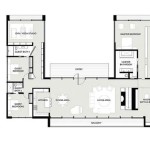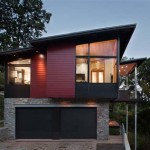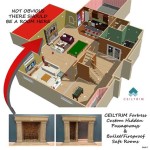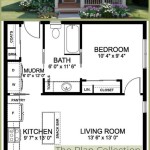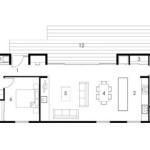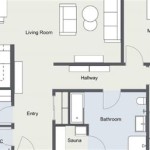A floor plan of a house is a scaled drawing that shows the layout of a building’s floors. It indicates the location of walls, doors, windows, and other architectural features, providing a clear understanding of the spatial relationships within the structure. Floor plans are essential tools for architects, builders, and homeowners, allowing them to visualize and plan the design and construction of a building.
One common application of floor plans is in real estate listings. They provide potential buyers with a comprehensive overview of the layout and flow of a property, helping them make informed decisions during the home-buying process. Floor plans also serve as a valuable reference for renovations, additions, and other home improvement projects, enabling homeowners to accurately plan the changes they want to make.
In the following sections of this article, we will delve deeper into the various types of floor plans, their components, and how they are used in different contexts. We will also discuss the benefits of using floor plans, common challenges encountered during the design process, and effective strategies for creating functional and aesthetically pleasing floor plans.
A floor plan is a scaled drawing of a building’s floor, showing the layout of walls, doors, windows, and other features.
- Essential for planning and designing buildings.
- Used in real estate listings to showcase property layouts.
- Serves as a reference for home renovations and additions.
- Types: single-story, multi-story, open-concept, etc.
- Components: walls, doors, windows, stairs, fixtures.
- Benefits: visualization, space planning, cost estimation.
- Challenges: scale accuracy, code compliance, design constraints.
- Strategies: consider functionality, flow, aesthetics, and scale.
- Software and tools: CAD, BIM, sketching apps.
- Collaboration: architects, builders, homeowners, interior designers.
Floor plans are a crucial tool for creating functional and visually appealing buildings.
Essential for Planning and Designing Buildings
Floor plans are indispensable tools for planning and designing buildings. They provide a visual representation of the building’s layout, allowing architects, builders, and homeowners to make informed decisions about the design and construction process.
During the planning phase, floor plans help architects and builders visualize the spatial relationships between different rooms and areas of the building. This enables them to optimize the flow of traffic, ensure proper ventilation and lighting, and plan the placement of electrical outlets, plumbing fixtures, and other utilities.
Floor plans are also essential for obtaining building permits and approvals from local authorities. Building codes often require detailed floor plans to ensure that the proposed building meets safety and accessibility standards. By submitting accurate and comprehensive floor plans, architects and builders can streamline the approval process and avoid costly delays.
Furthermore, floor plans serve as a valuable communication tool between architects, builders, and homeowners. They provide a common reference point for discussing design ideas, resolving conflicts, and making changes throughout the construction process. By having a clear understanding of the building’s layout, all parties involved can work together to create a functional and aesthetically pleasing structure.
In summary, floor plans are essential for planning and designing buildings because they:
- Provide a visual representation of the building’s layout
- Optimize the flow of traffic and ensure proper ventilation and lighting
- Facilitate the placement of electrical outlets, plumbing fixtures, and other utilities
- Assist in obtaining building permits and approvals from local authorities
- Serve as a communication tool between architects, builders, and homeowners
Used in real estate listings to showcase property layouts
Floor plans are widely used in real estate listings to provide potential buyers with a comprehensive overview of the layout and flow of a property. They serve as valuable tools for:
- Visualizing the property’s layout: Floor plans allow potential buyers to see the exact arrangement of rooms, hallways, and other spaces within the property. This helps them understand the overall size and shape of the property, as well as the relationship between different areas.
- Assessing the flow of traffic: Floor plans illustrate the flow of traffic through the property, showing how easily people can move from one room to another. This is particularly important for larger properties with multiple rooms and levels.
- Identifying key features and amenities: Floor plans highlight key features and amenities within the property, such as the number of bedrooms and bathrooms, the presence of a garage or basement, and the location of balconies or patios. This information helps potential buyers quickly identify properties that meet their specific needs and preferences.
- Comparing different properties: Floor plans enable potential buyers to compare the layouts of different properties side-by-side. This allows them to make informed decisions about which properties to visit in person and which ones to eliminate from consideration.
Overall, floor plans play a crucial role in real estate listings by providing potential buyers with a clear and concise understanding of the property’s layout and features. This helps them make informed decisions about which properties to pursue and ultimately find the home that best meets their needs.
Serves as a reference for home renovations and additions.
Floor plans serve as invaluable references for homeowners planning renovations or additions to their properties. By providing a detailed and accurate representation of the existing layout, floor plans help homeowners visualize the potential impact of changes and make informed decisions about the design and execution of their projects.
During the planning phase of a renovation or addition, homeowners can use floor plans to experiment with different layouts and configurations. They can explore options for expanding rooms, adding new spaces, or reconfiguring existing ones. Floor plans allow homeowners to see how changes will affect the flow of traffic, the placement of furniture and fixtures, and the overall functionality of the space.
Floor plans are also essential for communicating design ideas to contractors and architects. By providing a clear visual representation of the desired changes, homeowners can ensure that everyone involved in the project has a shared understanding of the scope and objectives. This helps to avoid costly misunderstandings and delays during the construction process.
Furthermore, floor plans serve as a valuable reference throughout the renovation or addition project. They can be used to track progress, identify potential issues, and make necessary adjustments along the way. By having a detailed floor plan to refer to, homeowners can stay organized and ensure that the project is completed according to their vision.
In summary, floor plans are indispensable references for home renovations and additions because they:
- Provide a visual representation of the existing layout
- Allow homeowners to experiment with different design options
- Facilitate communication with contractors and architects
- Serve as a reference throughout the project to track progress and make adjustments.
Types: single-story, multi-story, open-concept, etc.
Floor plans come in various types, each with its own unique characteristics and advantages. Some of the most common types of floor plans include:
Single-story floor plans: As the name suggests, single-story floor plans feature all living spaces on one level. This type of floor plan is often preferred for its simplicity, accessibility, and ease of maintenance. Single-story homes are particularly suitable for families with young children, seniors, or individuals with mobility impairments.
Multi-story floor plans: Multi-story floor plans have living spaces distributed across two or more levels, connected by stairs. This type of floor plan allows for more privacy and separation between different areas of the home. Multi-story homes are often preferred by families who need more space and separation between public and private areas.
Open-concept floor plans: Open-concept floor plans feature large, open spaces with minimal walls or partitions. This type of floor plan creates a sense of spaciousness and allows for easy flow between different areas of the home. Open-concept floor plans are popular for their modern and inviting aesthetic.
Split-level floor plans: Split-level floor plans have living spaces arranged on different levels, but with staggered heights. This type of floor plan often features half-flights of stairs and can create interesting and dynamic spaces. Split-level homes are a good option for sloping or uneven building sites.
Ranch-style floor plans: Ranch-style floor plans are single-story homes with a long, rectangular shape. This type of floor plan is often characterized by its simplicity, open-concept layout, and attached garage. Ranch homes are popular for their affordability and accessibility.
Cape Cod-style floor plans: Cape Cod-style floor plans are typically two-story homes with a symmetrical facade and a central chimney. This type of floor plan often features a steep roof, dormer windows, and a wraparound porch. Cape Cod homes are known for their charming and traditional aesthetic.
Components: walls, doors, windows, stairs, fixtures.
Floor plans consist of various components that represent the structural and functional elements of a building. Each component plays a crucial role in defining the layout and functionality of the space.
- Walls: Walls are vertical structures that divide and define different spaces within a building. They provide support, privacy, and protection from the elements. Floor plans typically depict walls as solid lines, with different line weights indicating load-bearing walls and non-load-bearing walls.
- Doors: Doors are openings in walls that allow for entry and exit from rooms and other spaces. Floor plans symbolize doors with small rectangles or arcs, indicating their location and swing direction. Different types of doors, such as sliding doors, French doors, and pocket doors, can be represented with specific symbols.
- Windows: Windows are openings in walls that allow natural light and ventilation into a space. Floor plans depict windows with small squares or rectangles, indicating their size and location. Different types of windows, such as casement windows, double-hung windows, and bay windows, can be represented with specific symbols.
- Stairs: Stairs are structures that connect different levels of a building. Floor plans represent stairs with a series of small rectangles or lines, indicating their location, direction, and number of steps. Different types of stairs, such as straight stairs, curved stairs, and spiral stairs, can be represented with specific symbols.
- Fixtures: Fixtures are permanent elements that are attached to walls, floors, or ceilings. Floor plans typically depict fixtures with small symbols or abbreviations. Common fixtures include sinks, toilets, showers, bathtubs, and kitchen appliances. The location and type of fixtures are crucial for planning the functionality and aesthetics of a space.
These components collectively form the foundation of a floor plan, providing a comprehensive understanding of the layout, flow, and functionality of a building.
Benefits: visualization, space planning, cost estimation
Floor plans offer numerous benefits throughout the planning, design, and construction phases of a building project. Some of the key benefits include:
- Visualization: Floor plans provide a visual representation of a building’s layout, allowing architects, builders, and homeowners to visualize the spatial relationships between different rooms and areas. This visual representation helps to identify potential design issues, optimize the flow of traffic, and ensure that the building meets the functional needs of its occupants.
- Space planning: Floor plans enable efficient space planning by allowing architects and designers to experiment with different layouts and configurations. By visualizing how furniture, fixtures, and other elements will fit within a space, they can optimize the use of available space and create a functional and aesthetically pleasing environment.
- Cost estimation: Floor plans serve as the basis for cost estimation during the early stages of a building project. By calculating the square footage of different areas and identifying the required materials and finishes, architects and builders can develop accurate cost estimates. This helps to control project costs and avoid unexpected expenses during construction.
Overall, floor plans are indispensable tools that provide valuable insights into the design and functionality of a building. They facilitate effective planning, decision-making, and cost management, ultimately contributing to the success of a building project.
Challenges: scale accuracy, code compliance, design constraints
Creating accurate and functional floor plans involves overcoming several common challenges, including:
- Scale accuracy: Ensuring the accuracy of the floor plan’s scale is crucial for proper construction and space planning. Inaccurate scaling can lead to errors in calculating square footage, material quantities, and the placement of fixtures and furniture. Architects and designers must pay meticulous attention to maintaining the correct scale throughout the floor plan creation process.
- Code compliance: Floor plans must adhere to building codes and regulations, which vary depending on the location and type of building. These codes address safety, accessibility, and structural requirements. Architects and designers must have a thorough understanding of the applicable codes and ensure that the floor plan complies with all relevant regulations. Failure to meet code requirements can result in costly delays and rework during construction.
- Design constraints: Architects and designers often face design constraints, such as the shape and size of the building site, existing structures, or budget limitations. These constraints can impact the layout and functionality of the floor plan. Creative problem-solving and collaboration between architects, engineers, and clients are essential to overcome design constraints and develop innovative solutions that meet the project’s objectives.
- Stakeholder input and preferences: Incorporating stakeholder input and preferences into the floor plan design is crucial for the success of a building project. Architects and designers must effectively communicate with clients, contractors, and other stakeholders to understand their needs, preferences, and priorities. Balancing different perspectives and finding common ground can be challenging, but it is essential for creating a floor plan that meets the expectations of all parties involved.
Addressing these challenges requires a combination of technical expertise, attention to detail, and effective communication. By overcoming these challenges, architects and designers can create accurate, code-compliant, and functional floor plans that lay the foundation for successful building projects.
Strategies: consider functionality, flow, aesthetics, and scale.
Creating a functional and aesthetically pleasing floor plan requires careful consideration of several key strategies:
Functionality: The primary purpose of a floor plan is to create a functional space that meets the needs of its occupants. This involves considering the intended use of each room, the flow of traffic, and the placement of fixtures and furniture. Architects and designers must understand the activities that will take place within each space and design the floor plan accordingly.
Flow: The flow of a floor plan refers to the ease of movement between different spaces. A well-designed floor plan will allow occupants to move seamlessly from one area to another without feeling cramped or obstructed. Architects and designers can achieve good flow by creating clear pathways, avoiding unnecessary obstacles, and considering the adjacencies of different spaces.
Aesthetics: The visual appeal of a floor plan is an important consideration, particularly for residential buildings. Architects and designers must pay attention to the overall aesthetic of the floor plan, ensuring that the layout is balanced and visually pleasing. This involves considering the proportions of rooms, the placement of windows and doors, and the use of natural light.
Scale: The scale of a floor plan is crucial for both functionality and aesthetics. The size of rooms, hallways, and other spaces must be carefully considered to ensure that the floor plan is comfortable and inviting. Architects and designers must also ensure that the scale of the floor plan is appropriate for the size of the building and the number of occupants.
Software and tools: CAD, BIM, sketching apps.
Computer-aided design (CAD) software is widely used for creating floor plans. CAD programs allow architects and designers to create precise and detailed drawings, including walls, doors, windows, and other building components. CAD software also enables users to easily modify and update floor plans, making it a valuable tool throughout the design process.
Building information modeling (BIM) software is another powerful tool for creating floor plans. BIM software goes beyond traditional CAD by creating a virtual 3D model of the building. This model contains not only the geometry of the building but also information about the building’s materials, systems, and components. BIM software enables architects and designers to visualize and analyze the building’s design in a more comprehensive way, leading to better decision-making and fewer errors during construction.
Sketching apps are a more accessible and user-friendly option for creating floor plans. These apps allow users to quickly sketch out their ideas using a variety of tools and templates. Sketching apps are particularly useful for early-stage design work and brainstorming sessions. They can also be used to create quick and simple floor plans for personal use or for sharing with others.
The choice of software or tool for creating floor plans depends on the specific needs of the project and the user’s level of expertise. CAD software is the industry standard for professional architects and designers, while BIM software is best suited for complex projects that require a high level of detail and coordination. Sketching apps are a good option for beginners or for creating simple floor plans for personal use.
In addition to the software and tools mentioned above, there are a number of other resources available to help architects and designers create floor plans. These resources include online libraries of floor plan symbols and templates, as well as online forums and discussion groups where users can share ideas and get feedback on their work.
Collaboration: architects, builders, homeowners, interior designers.
Creating a floor plan is a collaborative process that involves input from various professionals and stakeholders. Architects, builders, homeowners, and interior designers each play a crucial role in developing a functional and aesthetically pleasing floor plan.
- Architects
Architects are responsible for designing the overall layout of the building, including the floor plan. They work closely with homeowners to understand their needs and preferences, and they use their expertise to create a design that meets those needs while also adhering to building codes and regulations.
- Builders
Builders are responsible for constructing the building according to the architect’s plans. They work closely with architects to ensure that the floor plan is feasible and can be built within the budget. Builders also provide valuable input on the practicality of the design and can suggest alternative solutions that may be more efficient or cost-effective.
- Homeowners
Homeowners are the ultimate decision-makers when it comes to the floor plan of their home. They provide input on their needs and preferences, and they work with the architect and builder to create a design that meets their vision. Homeowners also need to be aware of their budget and the building codes and regulations that apply to their property.
- Interior designers
Interior designers are responsible for the interior design of the building, including the selection of finishes, fixtures, and furniture. They work closely with homeowners to create a space that is both functional and stylish. Interior designers can also provide valuable input on the floor plan, ensuring that the layout is conducive to the desired interior design.
Effective collaboration among architects, builders, homeowners, and interior designers is essential for creating a successful floor plan. By working together, these professionals can create a space that meets the needs of the homeowners, is feasible to build, and is aesthetically pleasing.









Related Posts

